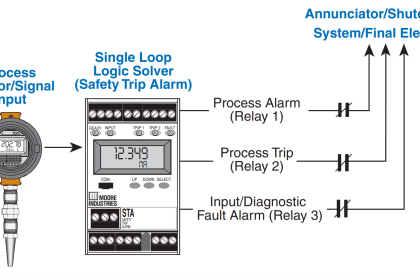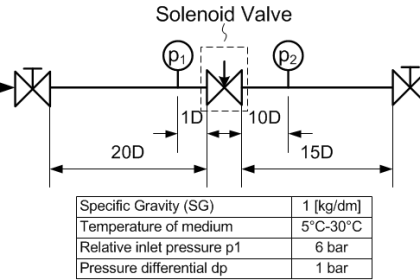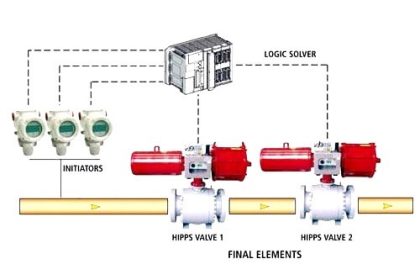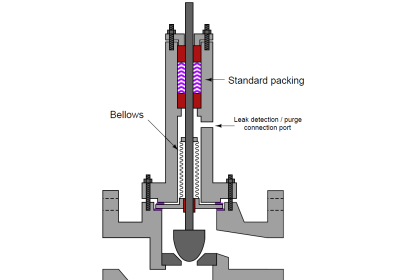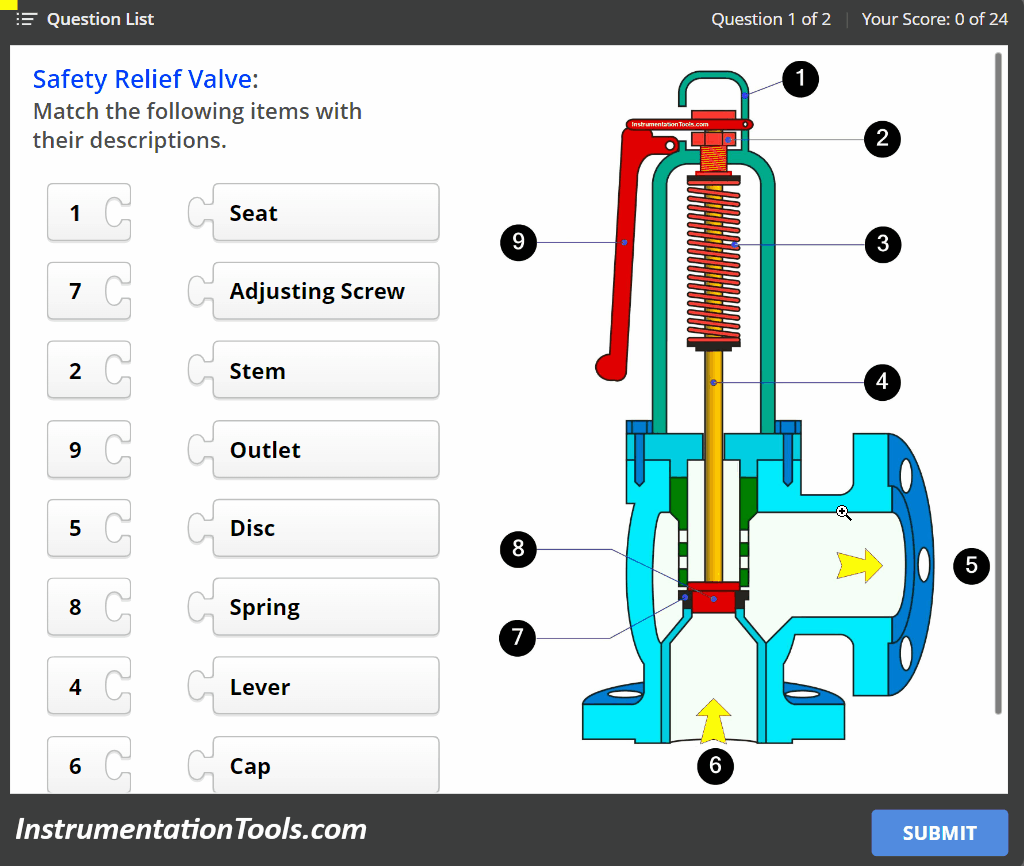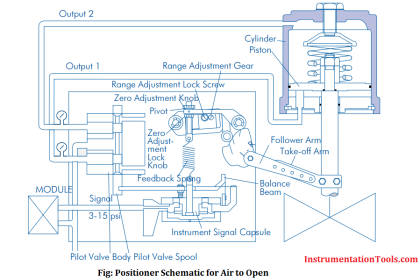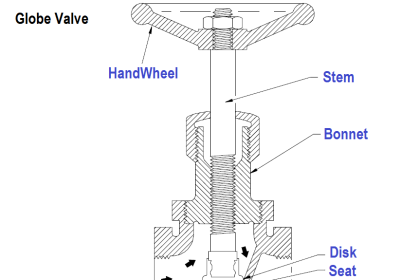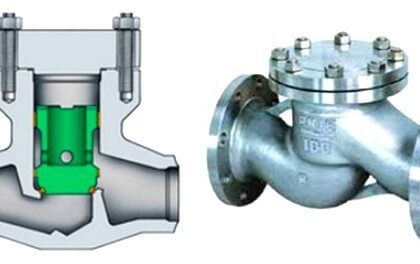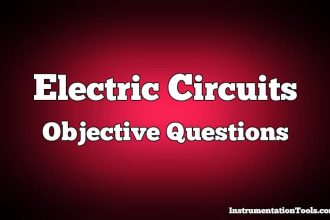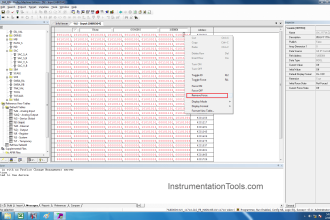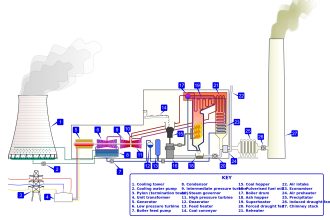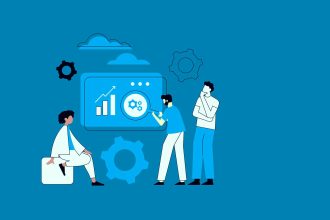While many safety and relief valves actuate by the direct action of the process fluid forcing against the valve plug mechanism, others are more sophisticated in design, relying on a secondary pressure sensing mechanism to trigger and direct fluid pressure to the main valve assembly to actuate it.
This pressure-sensing mechanism is called a pilot, and usually features a widely-adjustable range to give the overall valve assembly a larger variety of applications.
In a pilot-operated over-pressure-protection valve, the “lift” pressure value is established by a spring adjustment in the pilot mechanism rather than by an adjustment made to the main valve mechanism.
Pilot-operated Safety and Relief Valves
A photograph of a pilot-operated pressure relief valve used on a liquid petroleum pipeline appears here:
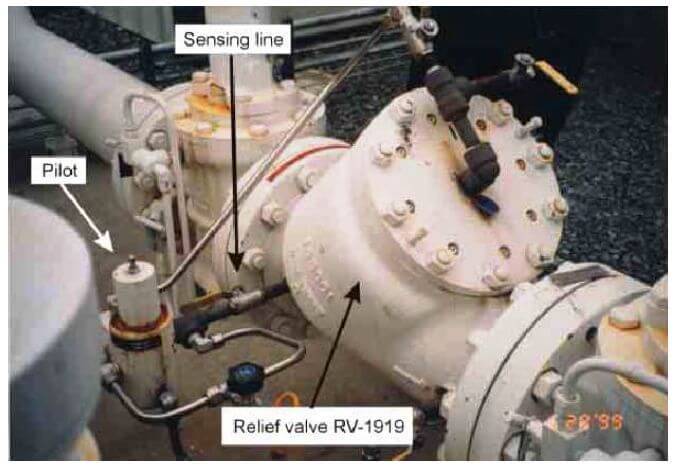
This photograph courtesy of the National Transportation Safety Board’s report of the 1999 petroleum pipeline rupture in Bellingham, Washington. Improper setting of this relief valve pilot played a role in the pipeline rupture, the result of which was nearly a quarter-million gallons of gasoline spilling into a creek and subsequently igniting.
One of the lessons to take from this event is the importance of proper instrument maintenance and configuration, and how such technical details concerning industrial components may have consequences reaching far beyond the industrial facility where those components are located.
The relief valve mechanism itself is the white-painted flanged valve found in the center-right region of the photograph (RV-1919). This particular relief valve happens to be a Fisher model 760 with 8-inch, ANSI 300# flanges.
The actuating pilot mechanism is the small unit connected to the relief valve body via stainless-steel tubing. When this pilot senses fluid pressure in the pipeline exceeding the lift pressure, it switches fluid pressure to the piston actuating mechanism of the main relief valve, opening it to relieve fluid pressure from the pipeline.
Thus, the lift pressure value for the relief valve is set within the pilot rather than within the main valve mechanism. Altering this lift pressure setting is a matter of adjusting spring tension within the pilot mechanism, and/or replacing components within the pilot mechanism.
Comparison to non piloted pressure relief valves
Advantages
- Smaller package on the larger pipe sizes.
- More options for control.
- Seals more tightly as the system pressure approaches but does not reach set pressure.
- Control pilot can be mounted remotely.
- Some designs allow for changes in orifice size within the main valve.
- Can be used in engines.
Disadvantages
- More complex, resulting in various fail-open failure modes.
- More expensive at smaller sizes (starts to even out as pipe size increases).
- Small parts in pilot valve are sensitive to contaminant particles.
